Table of Contents
“Desafinado” by Antonio Carlos Jobim, Newton Mendonça and Jon Hendricks
There has been a healthy dose of Latin songs that have made their way into the Great American Songbook—after all—Central America and South America are every bit as “American” as the United States. Among the composers of Latin jazz standards, the inimitable guitarist/composer, Antonio Carlos Jobim (1927-1994), stands tall. Jobim composed a great many enduring songs that jazz musicians have latched onto as essential Great American Songbook gems.
Newton Mendonça wrote the original Portuguese lyrics, after which the vocalese master, Jon Hendricks (b. 1921), created an English version. The resulting work is an interesting study in both lyrics and music. The Portuguese word “desafinado” essentially means “out of tune,” which justifies Jobim’s pointed use of dissonant intervals and non-diatonic melody notes. The pathway followed by the song explores various tonal centers in search of consonance, and the lyricists beautifully captured this essence.
Best Sheet Music download from our Library.
Form and Melody
The form of this song departs from the common AABA and ABAB, thirty-two bar forms. The eight-bar A theme (measures 1-8) is comprised of two four-bar phrases, each mostly stepwise (walking up a perfect fourth) and shaped like a double arc, ending on the flat 5 of the V/V chord in m. 3 and on the flat 5 of the iii7(b5) chord in m. 7).
A is followed by an eight-bar B theme (mm. 9-16). B can also be divided into two phrases, and begins with a quick interval of an ascending seventh starting on an offbeat, which leads directly into a descending line, first stepwise, then involving leaps that highlight dissonances.
Please, subscribe to our Library.
If you are already a subscriber, please, check our NEW SCORES’ page every month for new sheet music. THANK YOU!
The A theme reappears in the next eight bars (mm. 17-24) before a C theme (reminiscent of B for only the first bar) serves as a transition into a new key a major third higher than tonic (mm. 25-32). A new section begins (D at mm. 33-40) and is melodically characterized by a major second stepping back and forth between scale degrees 5 and 6 in the new key, after which a transposition of the new melody motif (the E theme, up a minor third from the D theme) carries the song to the original dominant (V) to bring the listener back to the A theme in the tonic key.

This A statement ends a bit differently, creating an arc of energy at the apex of the second phrase, so it is called A’ (A-prime).
This modification of A is often a very useful songwriting strategy, as it creates interest and variation, bringing the song around to a fresh ending having a touch of new material. This new material begins with a four-bar phrase of descending stepwise melodic sequences (“We’re bound to get in tune again before too long,”) which connect to another eight-bar melodic group characterized by tonal repetition of the tonic pitch.
Jobim utilized a type of cadential extension here, creating a twelve-bar final theme instead of the expected eight. This final twelve bar segment resembles a coda or “tail” built right into the piece (F theme). When one steps back, one can see that Jobim utilized a loose sonata form here—ABAC represents the Exposition, D and E are the Development (a transitional section), A’ clearly represents the Recapitulation (return of A) and the F theme functions as an obvious coda.

Jobim’s use of motives plays a strong role in this melody’s originality, as does his playing with dissonant tones outside the diatonic scale. Predominant motives include the opening four steps up the diatonic major scale in the very first bar. This melodic and rhythmic motive appears in both forward and retrograde varieties (retrograde in m. 9, with variation at m. 13, then retrograde in sequence with a downward step progression at mm. 57-58). A second motive Jobim employs is the rocking whole step, first cleverly introduced at m. 29 (“like the bossa nova, love should swing.”).
He features this motive in the last four bars of the first major section of the piece, anticipating and announcing the next large section’s primary motive. At mm. 33-48 (the D theme), Jobim combines both motives in an alternating, smoothly flowing pattern, showing his mastery of creating motivic and melodic unity. Hendricks mirrors the more consonant music in this section by using text reminiscent of bygone happy times (“We used to harmonize two souls in perfect time…”).
The motive in the final twelve bars, a repeated tonic pitch, successfully makes the composer’s point of finally attaining concordance (there is nothing more concordant than a unison pitch) following a melody peppered with dissonant leaps and unexpected tonal shifts. Hendricks’ response here reinforces the music with an idealized text depicting two hearts and souls at last abiding in perfect harmony.
Text Setting
As acknowledged above, the lyrics for “Desafinado” were originally in Portuguese, and these are still performed today. Whenever a writer is faced with the challenge of re-setting a text from another language to existing music, there are several important considerations.
First, one must comprehend the difference between a translation and a transliteration. A translation represents the precise meaning of a text in another language. A transliteration merely fits the music into a new language’s pattern of declamation—it may have little or nothing to do with the original text’s meaning.
A competent lyricist will have a full understanding of the original text’s translation before attempting a new transliteration into another language. Some transliterations respect the original text as well as convey the general meaning and theme of the composer’s and lyricist’s intent. Other transliterations seem to start with a clean slate and find alternate ways to convey a composer’s intent (that seems to be the case here with Hendricks’ lyrics).
Either way, tastefully setting the text in a manner that suits the singer and preserves the integrity of both music and lyrics becomes the goal. When studying a word-by-word translation of this original text, one quickly discovers that the Portuguese song’s theme is about a singer feeling hurt by her lover’s disapproval of her out-of-tune singing. She chastises him for not remembering that even those who sing out of tune have fragile hearts.
By contrast, Hendricks’ lyric approach changes the focus of the song to describe two people whose dissonant hearts must be made consonant for love to thrive. Regardless of the version preferred, a comparison of these two very different perspectives lends itself to a deeper understanding of the music and how it can be interpreted. Two lyricists may set the same piece of music using completely different paradigms. In this case, Mendonça spoke from a literal point of view regarding the dissonance expressed in the song title, while Hendricks spoke from a figurative, metaphorical standpoint.
Harmony
Jobim’s initial harmonic move (between the first and second chords of the piece) immediately sets the tone for a theme of dissonance throughout the song. He moves from a casual I chord to a V7(b5)/V—in no way providing smooth harmony or easy voice leading. He then mollifies the harshness by turning that chord into a minor chord over the same root and moves through a ii7-V7 progression which leads to a surprising vi7(b5), reflecting the previous b5 chord. The melody notes here are those dissonant b5s and b9s.
His B theme starts with ii7 and proceeds through a circle of dominant chords, but does not find its way back to the V of tonic before he interjects a dissonant major 7th built on the b9 immediately preceding a turnback progression (V7-I) to return to A. Jobim’s unexpected harmonic shifts effectively create the dissonant tension illuminated in the text. The C theme combines the two motives previously described and shifts the harmony from I to III. Not coincidentally, Hendricks’ lyrics beautifully reflect the harmony at this juncture: “Seems to me you’ve changed the tune we used to sing…”
At the D theme, Jobim utilizes a chromatically ascending bass from I-dim7/ii-ii-V7 followed by a typical I-vi-ii-V7 before modulating up a third and repeating the chromatic ascent (in the new key). He then transforms the V7 chord of that new key into a minor ii of the original tonic, moves to a non-diatonic, flat vii chord (Hendricks again catches this, and writes “slightly out of tune” in the measure containing this “wrong” chord) before landing on a V7/V-V7-I progression that returns to the A theme. Harmonically the song assumes a ii-V7-iii(b5)-VI7-ii shape at the point where A digresses to become A’ (m. 55, “sing a song of loving”).
In the four-bar transition (mm. 57-60) that opens the F theme, the harmony passes through an unusual juxtaposition of ii-iv6-I (“we’re bound to get in tune again before too long…”) before extending a cadence via a roundabout V7/V-bVII7-V7/V which finally makes its way to ii-V7-I in the tonic key.
Conclusions
“Desafinado” takes the idea of wordpainting (reflecting textual meanings in music) to a new level in so many ways, and yet, one could argue the reverse if the music were composed first (that the lyricists served as obsequious handmaidens of the music). Either way, both Jobim and Hendricks showed their cleverness by creating a piece of music in which the wedding of music and text are readily apparent in the way the text parallels non-diatonic, melodic pitch choices, dissonant harmonic tension, and the third-related, leaping tonics that wander throughout the A-B-A-C-D-E-A’-F (sonata) form this unusual piece exhibits.
The enduring renown of this piece is remarkable, given its fascinating complexity, and yet, Jobim was careful to balance complexity whenever it occurred with something relatively simple, thereby maintaining the song’s accessibility and relevance for generations of listeners. For example, when the melody was challenging and non-diatonic, he tended toward complementing it with more traditional, gentle-on-the-ear harmonies, never seeking to completely confound those performing or listening to the song.
Similarly, when the harmony explored new territory, the melody tended to be motivic and, therefore, familiar. Such exquisite balance between complexity and simplicity, light and dark, dynamic and static, and dissonance and consonance, appears to be ever present in so many wonderful works that make up the Great American Songbook.
Source
Jobim’s Sheet Music download.
Browse in the Library:
| Artist or Composer / Score name | Cover | List of Contents |
|---|---|---|
| Will B. Morrison – Melody in F (Syncopated Waltz) sheet music |
 |
|
| Will Young – Anything Is Possible | ||
| William Best I Love You For Sentimental Reasons (Jazz Standard) | William Best I Love You For Sentimental Reasons (Jazz Standard) | |
| William Eveleth – Blues Jazz and Rock Riffs For Keyboards |
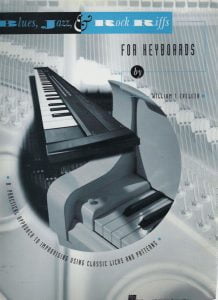 |
|
| William Gillock In Old Vienna Musescore File.mscz | ||
| William Gillock Valse Etude In Romantic Style Musescore File.mscz | ||
| William Joseph – Within (Songbook) (William Joseph) |
 |
William Joseph – Within (Songbook) (William Joseph) |
| William Robinson – My Girl | ||
| William Russo Composing Music A New Approach (ebook) |
 |
|
| Willie Dixon Preacher Of The Blues (2011) Mitsutoshi Inaba (Book) Biography |
 |
|
| Willie Fugal S Blues Piano transcription |
 |
|
| Willie Nelson – Always on My Mind Sheet Music |
 |
|
| Willie Nelson – On My Mind | ||
| Willie The Lion Smith – Finger Buster transcription |
 |
|
| Willie The Lion Smith Echo of Spring transcription |
 |
|
| Willow Weep For Me Words And Music By Ann Ronell 1932 Jazz Standard (Vintage sheet music) |
 |
|
| Wim Mertens – American Minimal Music La Monte Young Terry Riley Steve Reich Philip Glass |
 |
Book La Monte Young Terry Riley Steve Reich Philip Glass |
| Wim Mertens – Close Cover | Wim Mertens – Close Cover | |
| Wim Mertens – Struggle For Pleasure | Wim Mertens – Struggle For Pleasure | |
| Wim Mertens – Time Passing |
 |
|
| Wim Mertens Humility |
 |
|
| Wim Mertens Lir |
 |
|
| Windham Hill piano sampler |
 |
Windham Hill piano sampler |
| Windy Whistle (Le Renard et l’Enfant OST) Alice Lewis | ||
| Wings (McCartney) – Greatest Hits |
 |
Wings sheet music |
| Winifred Atwell Album Of Rags No 1 Original arrangements Vintage songbook |
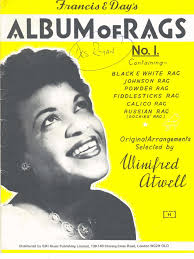 |
Winifred Atwell Album Of Rags No 1 Original arrangements Vintage songbook |
| Winifred Atwell Marguerite Monnot The Poor People Of Paris ( La Goualante Du Pauvre Jean) Piano Solo |
 |
|
| Winnie The Pooh The Honey Tree Sheet Music (Disney) |
 |
Winnie The Pooh The Honey Tree Sheet Music (Disney) |
| Winter Sonata O.S.T. (Ryu) | ||
| Winter Wonderland Other Christmas Favorites Songbook Piano Vocal guitar Chords |
 |
Winter Wonderland and Other Christmas Favorites Songbook Piano Vocal guitar Chords |
| Wish You Were Here – Pink Floyd (Musescore File).mscz | ||
| Within Temptation – Our Solemn Hour | ||
| Without you (Maria Carey) | ||
| Without You (Mariah Carey Piano Arr ) (Musescore File).mscz | ||
| Wiz Khalifa & Charlie Puth See You Again (Solo Piano) |
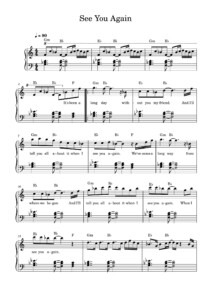 |
|
| Wolf Wagner Paraphrase Über Die Walküre |
 |
|
| Wolfe Richard Legit Professional Fake Book More Than 1010 Songs |
 |
Wolfe Richard Legit Professional Fake Book More Than 1010 Songs |
| Wolfenzon – Stücke für Klavier | Wolfenzon – Stücke für Klavier | |
| Womack, Bobby – Midnight Mover My Autobiography The True Story of the Greatest Soul Singer in the World (Book) |
 |
|
| Woman in love (Barbra Streisand) | ||
| Women Of Pop Rock Songbook Twenty-Two Hot Hits for Easy Piano |
 |
Women Of Pop Rock Songbook Twenty-Two Hot Hits for Easy Piano |
| Wonderful Christmastime -Paul Mccartney (Wings) (Musescore File).mscz | ||
| Wonderful Life – Black (Easy Piano Solo Sheet Music) (Musescore File).mscz | ||
| Woody Allen – A propósito de nada (autobiografía)(2020) |
 |
|
| Woody Allen – Apropos of Nothing (2020) Autobiography | Woody Allen – Apropos of Nothing-Simon and Schuster (2020) Cover | |
| Woody Guthrie This Land Is Your Land (Easy and Intermediate Piano Solo) |
 |
|
| World Hits Of Jazz Standard |
 |
World Hits Of Jazz Standard |
| Wuthering Heights (Ryuichi Sakamoto) | ||
| Wynton Kelly – Autumn Leaves Solo transcription | Wynton Kelly – Autumn Leaves Solo transcription | |
| Wynton Kelly – Dark Eyes Solo Piano transcription |
 |
|
| Wynton Kelly – Dark Eyes Solo Piano Transcription (Musescore File).mscz | ||
| Wynton Kelly – Full transcriptions | Wynton Kelly – Full transcriptions | |
| Wynton Kelly – I Dig of You Solo transcription |
 |
|
| Wynton Kelly – If I should Love You Solo transcription |
 |
|
| Wynton Kelly – Jazz Piano Collection |
 |
Wynton Kelly Piano Collection- |
| Wynton Kelly – Someday my prince will come (Piano solo) |
 |
|
| Wynton Marsalis Trumpet Genius Gourse, Leslie (Book) |
 |
|
| Wynton Marsalis – Caravan (Solo) |
 |
|
| Wynton Marsalis – Darn That Dream (Solo) | Wynton Marsalis – Darn That Dream (Solo) | |
| Wynton Marsalis – Dealfayos Dillema (Solo) |
 |
|
| Wynton Marsalis – Standards (sheet music transcriptions) |
 |
Wynton Marsales – Standards (sheet music transcriptions) |
| Wynton Marsalis In The Court Of King Oliver (Trumpet and rhythm section) |
 |
|
| Wynton Marsalis Omnibook For B Flat Instruments Transcribed exactly from his recorded solos |
 |
Wynton Marsalis Omnibook For B Flat Instruments Transcribed exactly from his recorded solos |
| Wynton Marsalis Struttin’ With Some Barbeque (Live) Wynton Marsalis’ Trumpet Solo |
 |
|
| Xenoblade Chronicles 2 Loneliness Kenji Hiramatsu | Xenoblade Chronicles Opening Theme Game sheet music | |
| Xenoblade Chronicles Opening Theme Game sheet music Yoko Shimomura |
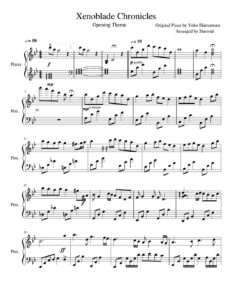 |
|
| Yamaha E443 Songbook digital keyboard PSR-E443 |
 |
|
| Yamaha Keyboard Songbook |
 |
Yamaha Keyboard Songbook |
| Yamaha Keyboard Songbook Song-Buch |
 |
|
| Yamaha PSR E373 YPT-370 PSR-EW310 Song book |
 |
|
| Yamaha Song Book |
 |
Yamaha Song Book |
| Yamaha Song book |
 |
Yamaha Songbook |
| Yamaha Songbook |
 |
Yamaha-Songbook |
| Yamaha songbook 50 Piano Greats for the piano (Yamaha collection) |
 |
50 Piano Greats for the piano (Yamaha collection) |
| Yamaha Songbook Contemporary Vol. 1 |
 |
Yamaha Songbook Contemporary Vol. 1 |
| Yana Bobalik Mysterious Music Я.Бобалік Songbook |
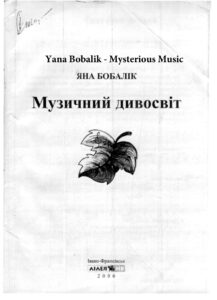 |
|
| Yana Bobalik Secret Music From Mysterious Music Я.Бобалік Таемна Музыка |
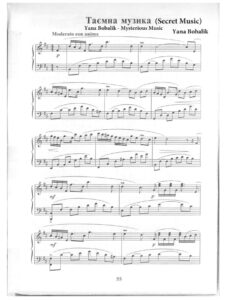 |
|
| Yann Tiersen Rue des Cascades (sheet music) | yann tiersen cascades sheet-music | |
| Yann Tiersen Mother’s Journey |
 |
|
| Yann Tiersen – Tabarly Sheet Music |
 |
|
| Yann Tiersen – Comptine Dun Autre ete | ||
| Yann Tiersen – La Dispute – Amelie Poulain | ||
| Yann Tiersen – La Valse d’Amelie Poulain | Yann Tiersen – La Valse Damelie | |
| Yann Tiersen – Le moulin – Amelie Poulain | Le Moulin – Amelie Poulain | |
| Yann Tiersen – Six pièces pour piano – Volume 2 – Amélie Poulain |
 |
Yann Tiersen – Six pieces pour piano – Volume 2 – Music Sheet |
| Yann Tiersen – Summer 78 | ||
| Yann Tiersen – Sur Le Fil |
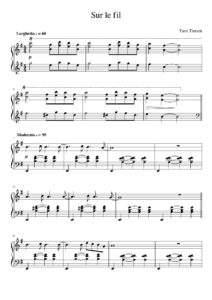 |
|
| Yann Tiersen – Pièces pour piano vol 1 et 2 + divers |
 |
Yann Tiersen – pièces pour piano vol 1 et 2 + divers  |
| Yann Tiersen Eusa 2015 Songbook |
 |
|
| Yann Tiersen J’Y Suis Jamais Alle piano solo (Amélie) |
 |
|
| Yann Tiersen Onze Pièces Pour Piano |
 |
Yann Tiersen Onze Pièces Pour Piano |
| Yann Tiersen Partitions intégrales Piano Works 1993-2004 | Yann Tiersen Partitions intégrales Piano Works 1993-2004 | |
| Yann Tiersen Tabarly Complete Book For Piano |
 |
|
| Yanni In My Time (Piano Solos) Sheet Music |
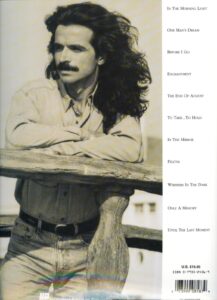 |
Yanni In my time piano solos |
| Yanni One Man’s Dream |
 |
|
| Yanni – Per Piano (Piano book) |
 |
Yanni – Per Piano |
| Yanni – In The Morning Light | ||
| Yanni – Nostalgia | ||
| Yanni – One Man’s Dream (Musescore File).mscz | ||
| Yanni -The Best of |
 |
 |
| Yanni Ethnicity Book |
 |
Yanni Ethnicity Book |
| Yaron Herman – Hallelujah (Leonard Cohen) transcription |
 |
|
| Yashal (Elisa) | ||
| Yasuharu Takanashi – Naruto Shippuden OST – Loneliness |
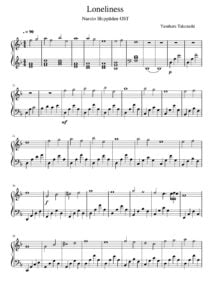 |
|
| Yedidia, Ronn Piano Sonata No 3 outcries (manuscrit) |
 |
|
| Yehezkel Raz Ballerina Piano Solo sheet music |
 |
|
| YES Fragile |
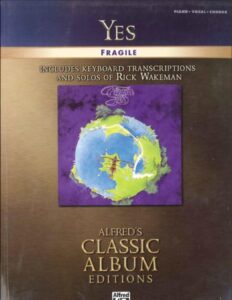 |
YES Fragile |
| YES – Complete Deluxe Edition |
 |
YES – Complete Deluxe Edition |
| Yes Close To The Edge The Story Of Yes (Book) |
 |
|
| Yes The Best Of Guitar Songbook with TABs |
 |
Yes The Best Of Guitar Songbook |
| Yesterday Piano Cello – Piano Sheet Music – Paul McCartney |
 |
|
| Yesterday Piano vocal guitar Songbook Featuring Music From the OST |
 |
|
| Yesterday The Beatles For Jazz Piano (Musescore File).mscz | ||
| Yesterday when I was young (Charles Aznavour) | ||
| Yimkin Law ( Et maintenant on va où OST) Racha Rizk | ||
| Yiruma – 27 May | ||
| Yiruma – Destiny Of Love | ||
| Yiruma – Dream | ||
| Yiruma – Dream A Little Dream Of Me | Yiruma – Dream A Little Dream Of Me | |
| Yiruma – Falling |
